The Rambur’s Forktail damselfly (Ischnura hastata) is one of the more widespread and common damselflies in my area, and across the southern part of the country, really. Its range even extends into Hawaii, according to the sightings map from Odonata Central:
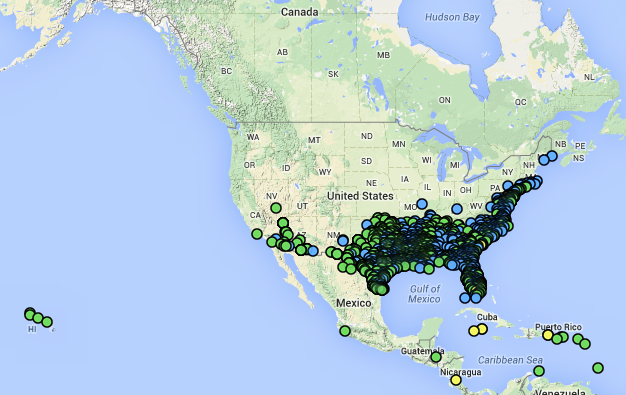
There are a couple of reasons this damselfly has such an extensive range. One is that they are fairly large, dwarfing their relatives, especially the tiny Citrine Forktail (I. hastata) or the equally dainty Everglades Sprite (Nehalennia pallidula).
Another reason might very well be that they are badasses!
I was sitting on the couch one lazy afternoon while the wife and kids were at the library when I noticed an Everglades Sprite drifting near the doorknob of one of the French doors that lead out onto the pool deck. I ran into my office to get my camera, but by the time I got back, a female Rambur’s had taken notice of this Everglades Sprite as well.
And here is what ensued!
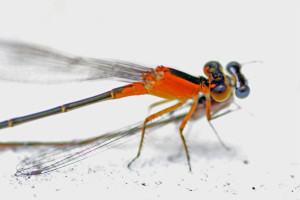

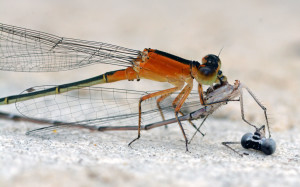
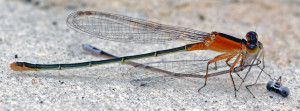
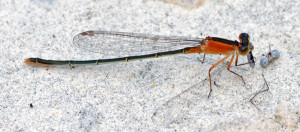
The first two pictures were overexposed because I had left the camera in “bird” mode,1 which means wide open lens. Adding flash to that means the pictures were almost solarized. Good thing digital processing is so powerful; you can at least see the action!
Here is a bit more about the species, for those who are interested. Like the range map above, this is from Odonata Central:
Rambur’s Forktail is the most widespread forktail of the New World, ranging as far north as Maine, southward to southern California, Mexico, Central and South America. . . . It also inhabits the Hawaiian Islands, where it was introduced in 1973. . . . As widespread as this species is, surprisingly little has been written about its biology. Both sexes will remain close to the water and although males are not territorial, females are known to be highly predaceous and often cannibalistic. Males often do not release females from the wheel position for several hours, and sometimes as many as seven, to secure their genetic contribution. Red females will sometimes attack males, but more often curl their abdomen downward while fluttering their wings in a refusal display.
I bring to your attention the relevant bit from the description above: “females are known to be highly predaceous.” As the Everglades Sprites attempting to get their mack on just a few feet away might say, “tell us about it!”
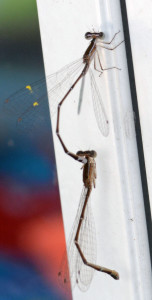
References
Odonatacentral.org
Paulson, D. (2011). Dragonflies and Damselflies of the East. Princeton, NJ: Princeton UP.
